Black Cherry Bonsai and More!
Hey everyone the season of Tree's? If not why not. Here I have a large array of epic bonsai 30 odd and counting what a great hobby!

Above and below my amazing black cherry Bonsai. I am shaping the one in a heart, should be nice in a few months right?
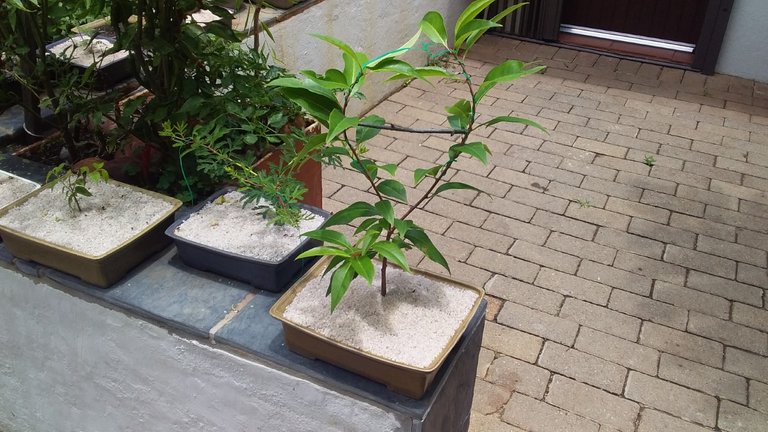
Below a lovely spekboom was gifted to us from the maternity house when my son was born. I bonsai'd it. More her as per wikipedia: Description
It is a soft-wooded, semi-evergreen upright shrub or small tree, usually 2.5–4.5 metres (8–15 ft) tall. Similar in appearance to the unrelated "jade plant" Crassula ovata (family Crassulaceae), P. afra has smaller and rounder pads and more compact growth (shorter internodal spaces, down to 1.5 millimetres (0.059 in)). It is much hardier, faster growing, more loosely branched, and has more limber tapering branches than Crassula once established.[1]
The genus Portulacaria has been shown to be an outlier, relatively unrelated to the other genera in the family, which are all restricted to small ranges in the arid far west of Southern Africa.[2]
Distribution and habitat
It is very widespread in the east of South Africa (including Eswatini). In this moist climate, it is relatively rare, and tends to favour dryer rocky outcrops and slopes.
It is also found in much denser numbers in the dryer southern Cape. Here it occurs from the Little Karoo of the Western Cape, eastwards up until the thicket vegetation of the Eastern Cape.[3] Spekboom is found most prolifically in the Albany thickets, a woodland ecoregion, which locally is often called noorsveld, after the high number of succulent Euphorbia species, which are often called noors plants.[4] In these environments, P. afra is a source of food for multiple large herbivores, such as the Black rhinoceros and the African elephant.[5] Although it is not the primary food source for these animals, it still makes up a significant portion of their diet. [5] https://en.wikipedia.org/wiki/Portulacaria_afra
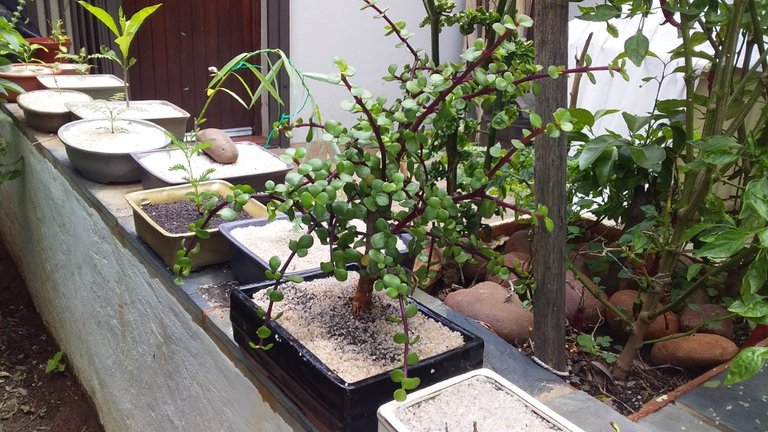
Description
At the base of the petiole a pair of stipules form. These may fall in spring, or last for much of the summer or even for more than one year (marcescence).
Willows all have abundant watery bark sap, which is heavily charged with salicylic acid, soft, usually pliant, tough wood, slender branches, and large, fibrous, often stoloniferous roots. The roots are remarkable for their toughness, size, and tenacity to live, and roots readily sprout from aerial parts of the plant.[4]
The leaves are typically elongated, but may also be round to oval, frequently with serrated edges. Most species are deciduous; semievergreen willows with coriaceous leaves are rare, e.g. Salix micans and S. australior in the eastern Mediterranean. All the buds are lateral; no absolutely terminal bud is ever formed. The buds are covered by a single scale. Usually, the bud scale is fused into a cap-like shape, but in some species it wraps around and the edges overlap.[5] The leaves are simple, feather-veined, and typically linear-lanceolate. Usually they are serrate, rounded at base, acute or acuminate. The leaf petioles are short, the stipules often very conspicuous, resembling tiny, round leaves, and sometimes remaining for half the summer. On some species, however, they are small, inconspicuous, and caducous (soon falling). In color, the leaves show a great variety of greens, ranging from yellowish to bluish color. Willows are among the earliest woody plants to leaf out in spring and the last to drop their leaves in autumn. Leafout may occur as early as February depending on the climate and is stimulated by air temperature. If daytime highs reach 55 °F (10 °C) for a few consecutive days, a willow will attempt to put out leaves and flowers. Leaf drop in autumn occurs when day length shortens to approximately ten hours and 25 minutes, which varies by latitude (as early as the first week of October for boreal species such as S. alaxensis and as late as the third week of December for willows growing in far southern areas).
Flowers
Young male catkin
Willows are dioecious, with male and female flowers appearing as catkins on separate plants; the catkins are produced early in the spring, often before the leaves.
The staminate (male) flowers are without either calyx with corolla; they consist simply of stamens, varying in number from two to 10, accompanied by a nectariferous gland and inserted on the base of a scale which is itself borne on the rachis of a drooping raceme called a catkin, or ament. This scale is square, entire, and very hairy. The anthers are rose-colored in the bud, but orange or purple after the flower opens; they are two-celled and the cells open latitudinally. The filaments are threadlike, usually pale brown, and often bald.
The pistillate (female) flowers are also without calyx or corolla, and consist of a single ovary accompanied by a small, flat nectar gland and inserted on the base of a scale which is likewise borne on the rachis of a catkin. The ovary is one-celled, the style two-lobed, and the ovules numerous. More here as per wikipedia.org https://en.wikipedia.org/wiki/Willow
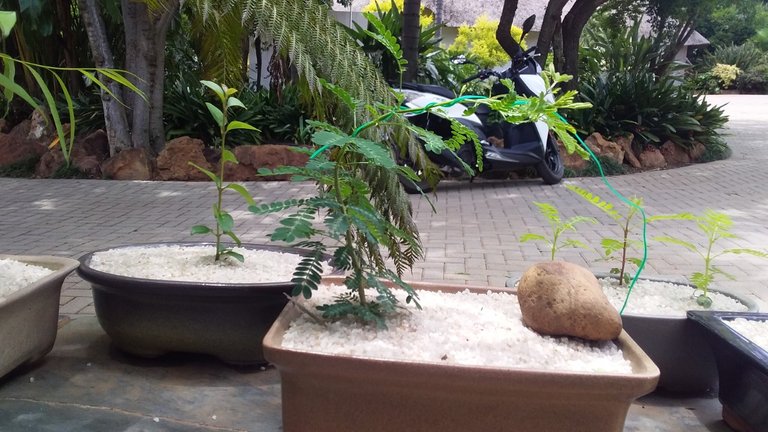

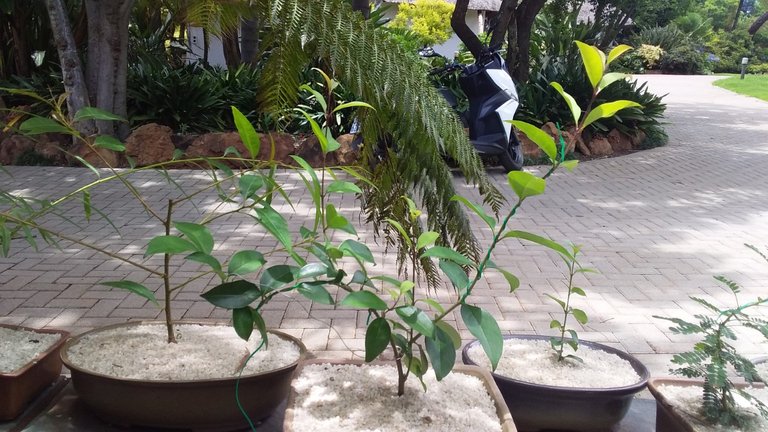
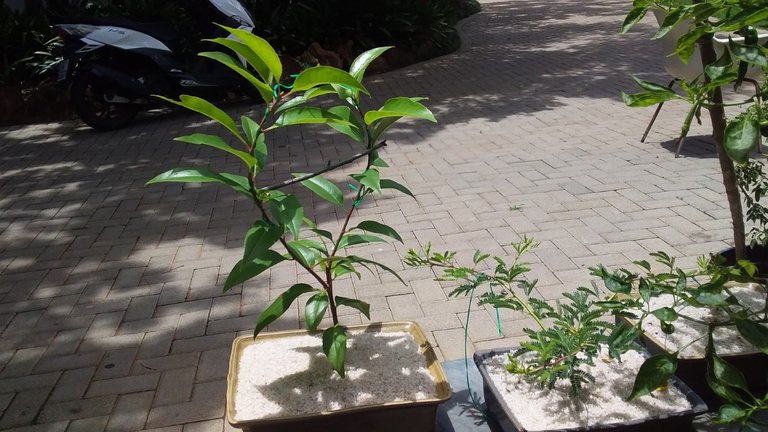
Glorious paper bark. Acacia thorn trees really make such amazing Bonsai Trees too you can literally shape them into anything as I am here a nice flat top beauty!
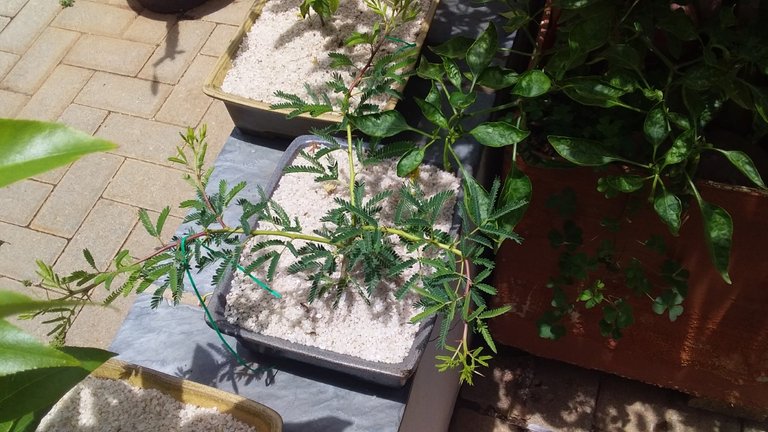
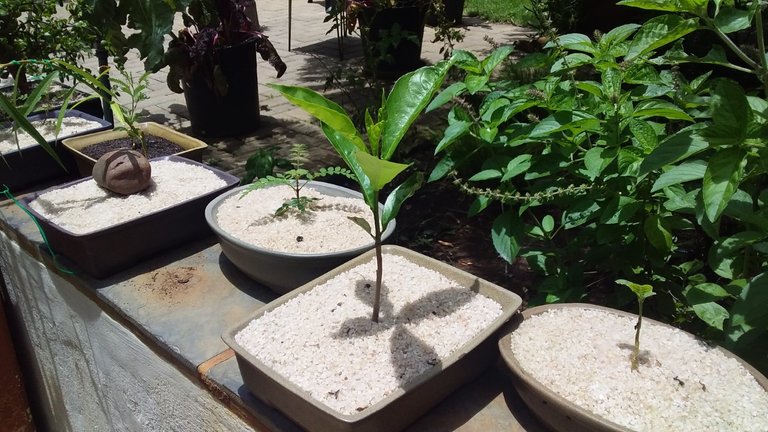
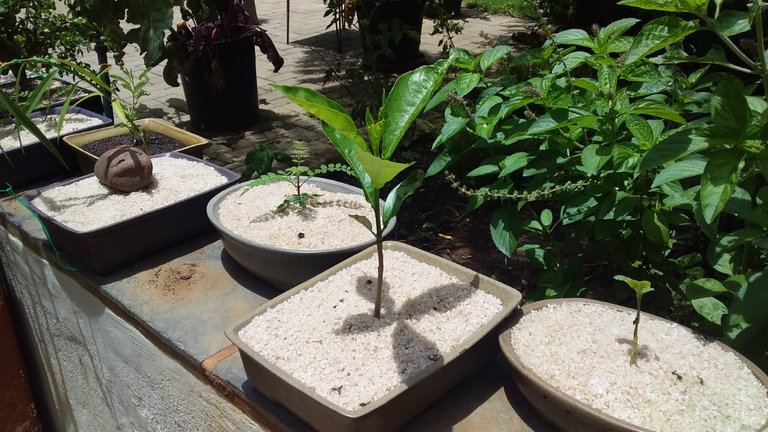
Above my gorgeous son Jesse's Baobab Bonsai I will gift him when hes old enough to care for it!
For the most common use of "Baobab", see Adansonia digitata.
"Baobab" and "Upside-down tree" redirect here. For the tree in Hyde Park, see Fagus sylvatica § Cultivation. For other use, see Baobab (disambiguation).
Adansonia
Baobab Adansonia digitata.jpg
Adansonia digitata in Tanzania
Scientific classificatione
Kingdom: Plantae
Clade: Tracheophytes
Clade: Angiosperms
Clade: Eudicots
Clade: Rosids
Order: Malvales
Family: Malvaceae
Subfamily: Bombacoideae
Genus: Adansonia
L.[1]
Species
See Species section
Adansonia is a genus made up of eight species of medium to large deciduous trees known as baobabs (/ˈbeɪoʊˌbæb/). Previously classified within the family Bombacaceae, they are now placed in the Malvaceae. They are native to Madagascar, mainland Africa[2] and Australia.[3] Trees have also been introduced to other regions such as Asia.[2][4][5] The generic name honours Michel Adanson, the French naturalist and explorer who described Adansonia digitata.[6] The baobab is also known as the "upside down tree", a name that originates from several myths.[7] They are among the most long-lived of vascular plants[8] and have large flowers that are reproductive for a maximum of 15 hours.[9] The flowers open around dusk; opening so quickly that movement can be detected by the naked eye and are faded by the next morning.[9] The fruits are large, oval to round and berry-like and hold kidney-shaped seeds in a dry, pulpy matrix.
In the early 21st century, baobabs in southern Africa began to die off rapidly from a cause yet to be determined. Scientists believe it is unlikely that disease or pests were able to kill many trees so rapidly, and some speculated that the die-off was a result of dehydration from global warming.[10][11]

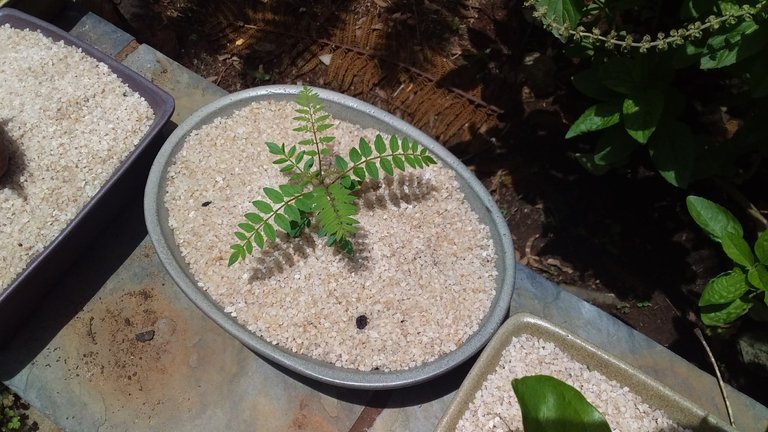
Above and below jacaranda tree's these I germinated from seed, we have a few white jacaranda flowers on the premesis these promise to be amazing one day when they flower the white and not purple flowers!
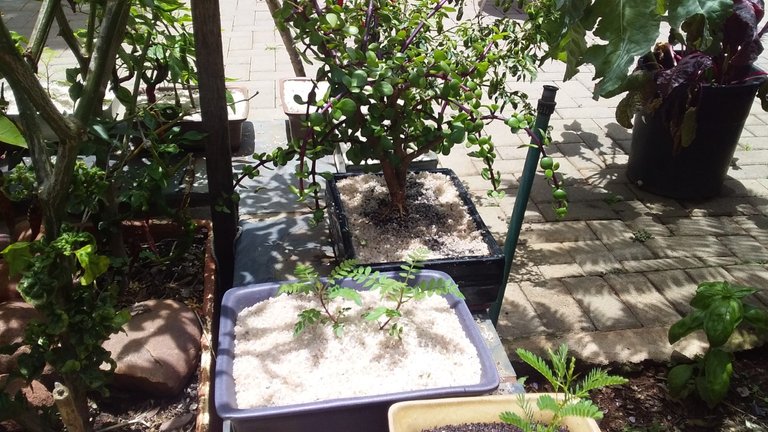
Lastly I have 2 weeping willow trees I will shape downward as I am this one pretty much how its done in nature. I grew these from a cutting from a big tree amazing right?
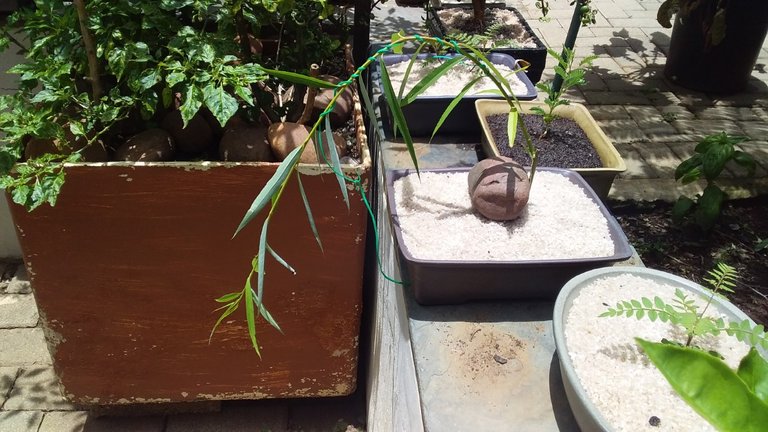
Nature the incredible!
Love and light, have an amazing weekend!
Cheer$;)
Credits www.wikipedia.org
!discovery 30
Stunning thanks bruv, Cheer$;)
This post was shared and voted inside the discord by the curators team of discovery-it
Join our community! hive-193212
Discovery-it is also a Witness, vote for us here
Delegate to us for passive income. Check our 80% fee-back Program
Thanks so much . Cheer$;;)